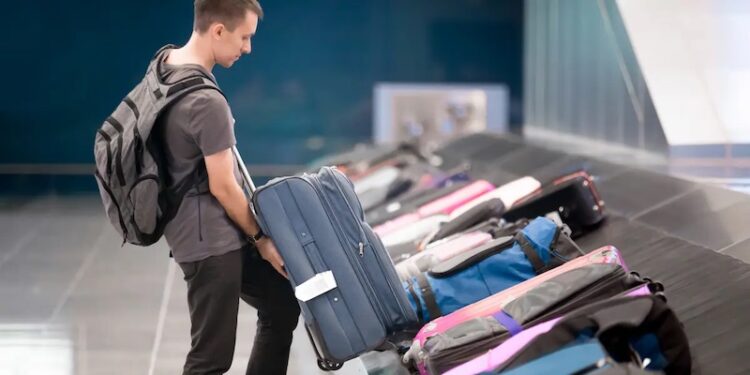If you want to go through airport security and have a relaxing flight, it’s crucial that you pack the correct luggage. Due to its convenience and adaptability, travel bags have quickly gained in popularity.
However, it is essential to know the rules of carry-on bags to avoid any unpleasant surprises at the airport.
Learn more about whether or not backpacks can be brought on board an airplane as carry-on luggage by reading this article and using the resources provided to plan your next trip with confidence.
Recognizing Carry-On Requirements for Airline Travel
Size, weight, and quantity restrictions on carry-on items vary widely depending on the airline. Because airline policies differ, it’s vital that you double-check with your selected carrier before booking a journey.
Carry-on baggage restrictions are often set by airlines in terms of both linear dimensions (height + breadth + depth) and weight. Most airlines allow one carry-on luggage and one personal item per passenger, however, these items have size restrictions.
Find out if your travel bag satisfies the criteria for carry-on luggage by reading up on the requirements of your airline.
Scale and Dimensions
Check that your backpack fits the airline’s size requirements for carry-on bags. Maximum linear dimensions for checked bags typically range from 45 to 55 inches (115 to 140 cm) in length, width, and depth.
Check your measurements to avoid having a too-big or too-small bag. Keep in mind that the size of the backpack can vary depending on the design you pick and the amount of compression it offers.
Take into account the dimensions of the bag and whether or not it will fit in the overhead compartments or under your seat.
If your bag is overly big or too large, it may be difficult to store on the plane even if it is the correct dimensions.
Restrictions Due to Weight
Carry-on luggage is subject to size and weight restrictions imposed by airlines. The normal range for such limits is between 7 and 15 kilos (around 15 and 7 pounds).
Before you leave for the airport, make sure your backpack doesn’t exceed the airline’s weight limit. Keep in mind that you’ll need to carry the combined weight of the backpack and its contents. Make sure your backpack doesn’t exceed the weight restriction by distributing the weight equally.
Funding for Individual Use
Carry-on baggage limits vary by airline, but most let you bring a personal item like a purse, laptop bag, or small backpack on board as well.
This allows you to bring more stuff on board or keep your necessities close at hand. Determine the size and kind of carry-on items permitted by checking with your airline. Take advantage of this to stow anything that won’t fit in your regular bag or anything you want to keep close at hand.
Security Checkpoints to Think About
Carrying a backpack through airport security will require you to go through further screening.
If you want to get through security faster, pack your gadgets, liquids, and other items that may need to be removed from your bag into easily accessible compartments like a backpack.
Get to know the Transportation Security Administration’s (TSA) rules on what you can and can’t bring on a flight, and make sure you follow them to prevent hassles and potential confiscation.
Conclusion
Backpacks are a popular and space-efficient option for air travelers. However, before booking your flight, make sure you are familiar with your chosen airline’s policies on carry-on items. Keep in mind the size and weight limits, as well as any restrictions on carry-on luggage.
Check the airline’s guidelines to see if your backpack can fit in the overhead bins or under the seat by measuring its linear dimensions. To avoid extra fees from the airline, make sure your bag doesn’t weigh more than the allowed limit and is packed evenly.

